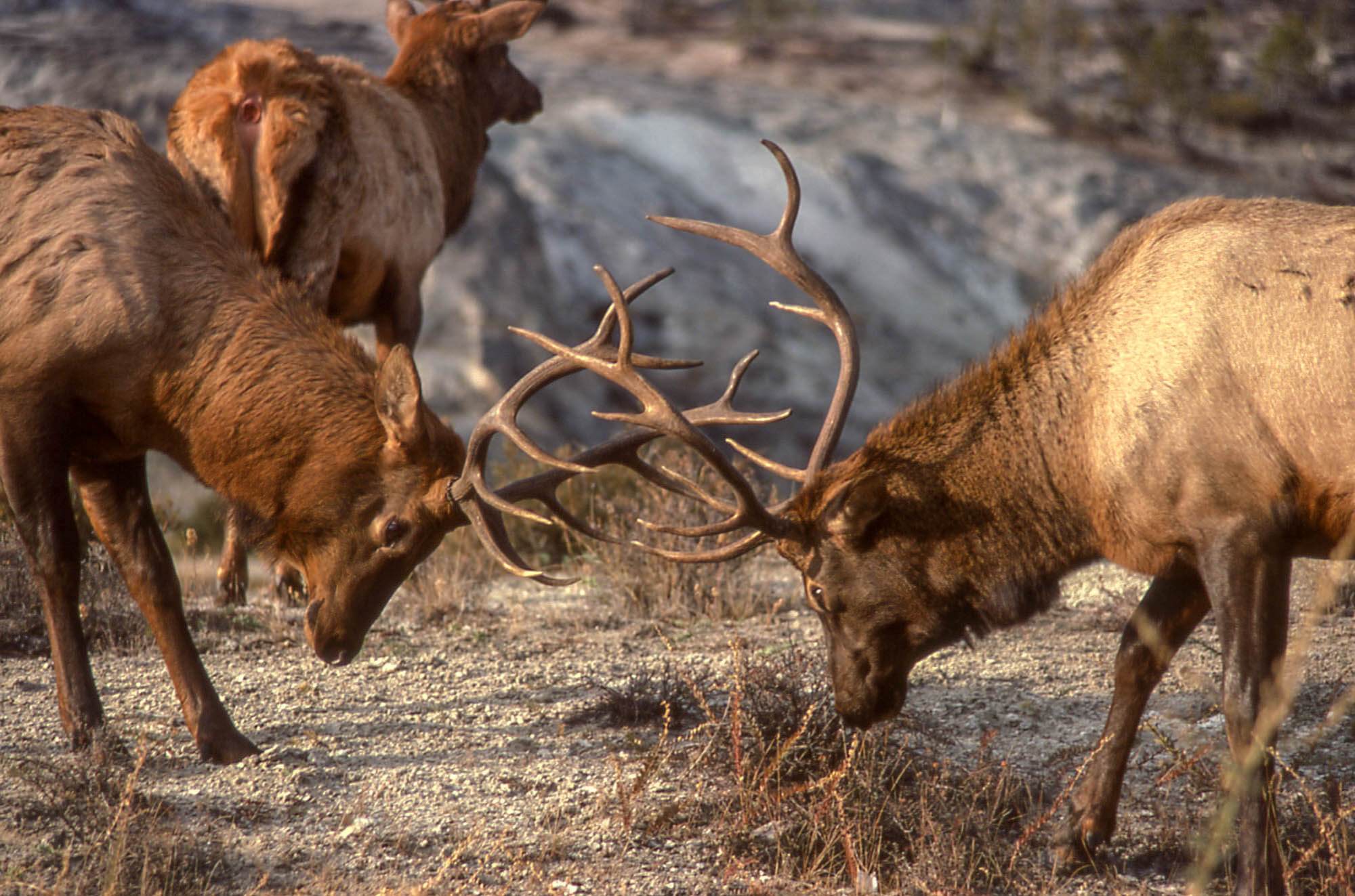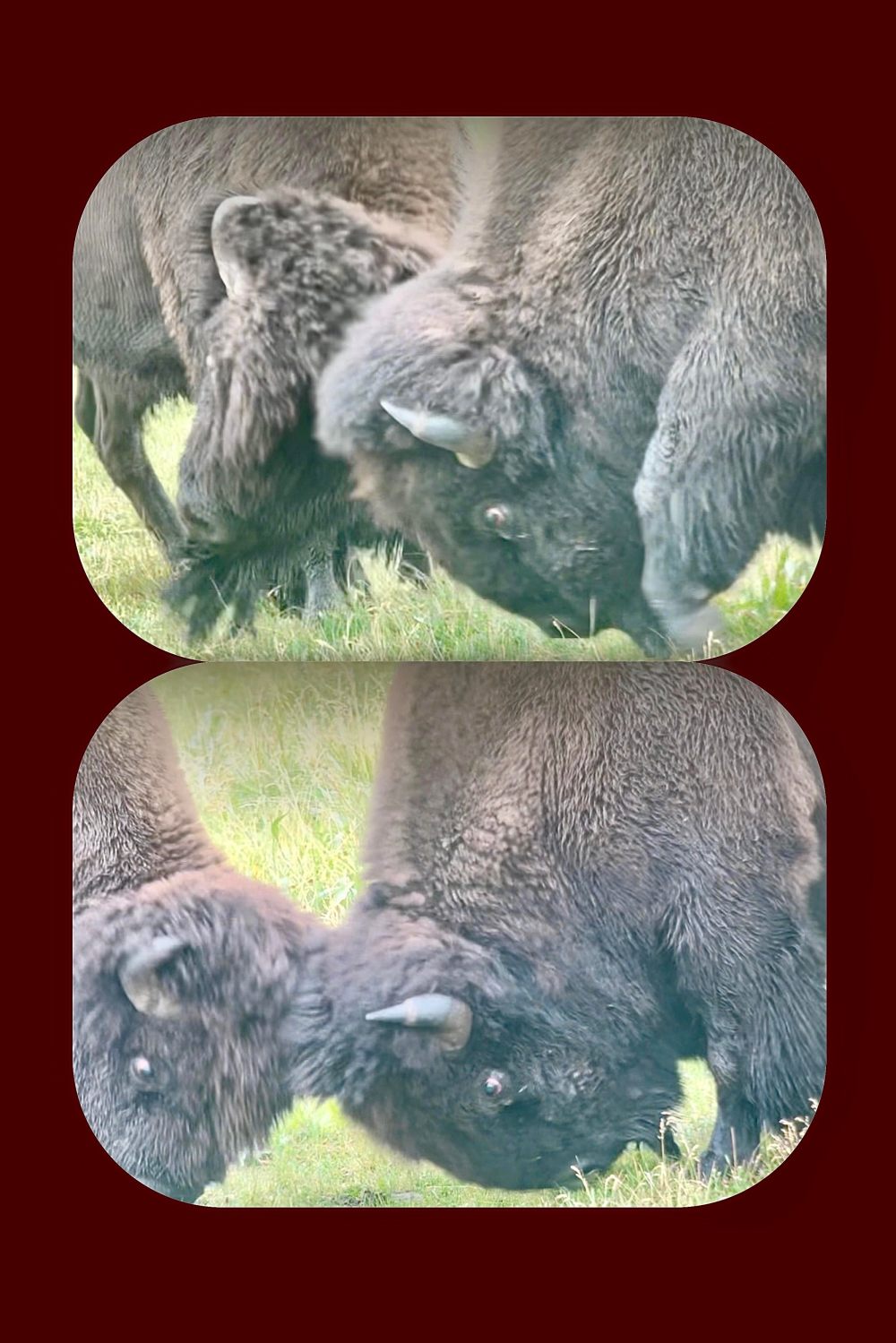Grand Cycle of Life: The Bison & Elk Rut

The seasonal changes in Yellowstone are more than just shifts in weather; they are the catalysts for the natural cycles that govern the lives of its wildlife. The migration of bison and the rutting of elk are intertwined with these seasonal rhythms, creating a dynamic and ever-changing landscape. For those lucky enough to witness these events, the images—and sounds—are permanently etched into memories. Watching a herd of bison move through a sea of golden-colored grass or hearing the bugle of an elk echoing in the crisp autumn air is an opportunity to imbibe nature at its most raw and powerful. As the months shift from summer into fall and then winter, the Yellowstone ecosystem shifts with them.
During the summer, the bison are at their most visible in Yellowstone. The warmer months bring an enormous bounty of nutritious food—grasses, forbs, and sedges—allowing these giant bovines to enter the rut in peak physical health. The breeding period, beginning in mid-July and peaking in early-mid August, is dominated by testosterone-driven bulls competing for mating rights. As July begins, small groups of bulls—generally found in small bachelor herds found almost anywhere outside of the breeding season—begin their treks to join the much larger maternal groups found on the grassy floors of Lamar and Hayden Valleys. From the end of June through August, bison number in the thousands as the focus shifts from eating to reproduction.
The rut is intense, with bulls bellowing loudly, urinating in wallows (dirt depressions in the ground), and then rolling in the dirt to cover themselves in pheromones (“bison cologne”), and hormone-driven battles leading to violent head-to-head impacts that can sound like a clap of thunder. Cows, with their young-of-the-year wandering around in a state of confusion, are pestered relentlessly as the bulls fight for their attention. There is nothing quite like the raw and intense drive displayed by 1000-2000 pound animals working to ensure the survival of their species!
By the end of August, the rut draws to a close as the days shorten and temperatures drop. As September marches towards October, the bison begin their ancient, annual migration to the lower elevations of the Yellowstone River near Gardiner, MT, and the Madison Valley near West Yellowstone, MT. This movement is driven by the search for food, as the grasses they rely on in summer lose their nutritional value and, eventually, disappear under a blanket of snow.

Two bull bison in their prime battle for the right to breed a fertile cow. Stills from video by YW Guide Aleksa B.
September through October, the same time the bison are transitioning to their winter feeding grounds, brings the elk rut–and the beautifully orchestrated, sometimes violent intensity that goes with it. While the bison rut is a spectacle of movement and posturing, the elk rut is defined by sound and showmanship. Elk, Yellowstone’s most abundant large mammal, gather together as males in their prime– sporting magnificent six or seven-point racks (antlers)–work to secure a “harem” of cows that can number up to two dozen. The elk rut and the corresponding mating rituals are among the park’s most dramatic displays. These rituals include 750lb bulls bugling to attract mates, herding cows into their harems (and ensuring they don’t wander off to join a competitor), and the bulls engaging in fierce battles to establish dominance and secure mating rights.
The elk rut is defined by the haunting bugle of the bulls, a sound that echoes through the forests and valleys of Yellowstone. This call serves multiple purposes: it announces the presence of a dominant bull to potential mates, warns off rivals, and gathers together the bull’s harem of cows. The bugle starts with a deep, resonant tone that rises to a high-pitched squeal before trailing off into a series of grunts, making it one of North America’s most distinctive wildlife calls.
The rut is a time of intense competition. Bulls will fight for the right to mate, engaging in antler clashes that can be both thrilling and violent. These battles are not just tests of strength but also endurance, as the victorious bull must then protect his harem from challengers throughout the rutting season. As the rut progresses, the behavior of elk becomes increasingly erratic. Bulls often forgo eating to focus entirely on mating, which can leave them physically depleted by the end of the season. Cows, meanwhile, are choosy, frequently moving between harems to find the most dominant and genetically fit bull.
Though challenging for bulls and cows alike, these rutting seasons are critical to the long-term survival of Yellowstone’s magnificent bison and elk populations and a fascinating example of the grand cycle of life that is constantly playing out in the wild.
Blog content by YW Lead Naturalist Laura L. To learn more about Laura, and the entire Yellowstone Wild team, click HERE.




